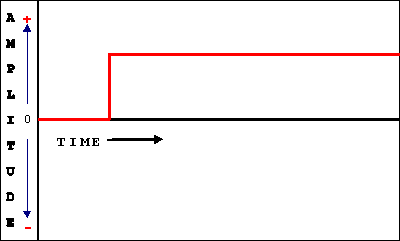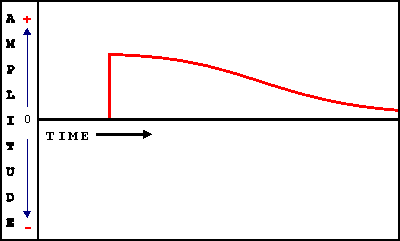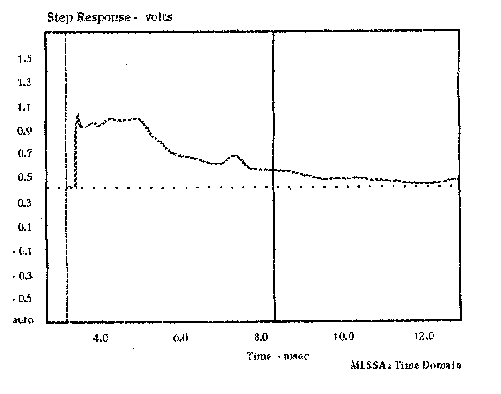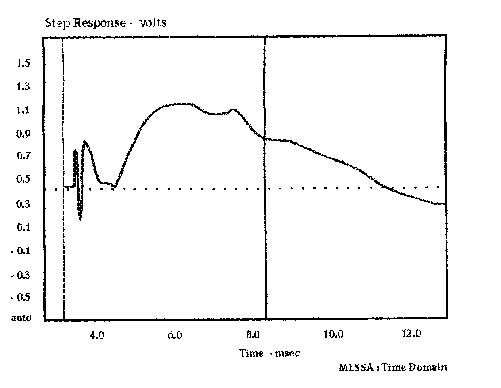Meadowlark AudioLoudspeakers and Time Coherence What You Don't Know Can Hurt YouA technical discussion by Pat McGinty, designer for Meadowlark Audio
THE WORLD OF SPEAKERS IS DIVIDED INTO JUST TWO CLASSES:TIME COHERENT SPEAKERS AND TIME INCOHERENT SPEAKERS.
HERE IS WHAT YOU SHOULD KNOW ABOUT THIS
Any musician can tell you that the 'tools of the trade' are pitch, loudness and timing. Likewise, electronic music reproduction is a three dimensional problem: the domains of which are not merely frequency and amplitude, but also: time. This may seem obvious once it is pointed out, but in high end audio we seem to turn a blind eye, or a deaf ear to the issue of correct timing in our stereo systems. The specifications commonly used to describe speakers dwell almost entirely upon frequency and amplitude while revealing nothing at all about time domain fidelity. For good reasons, most manufacturers of speakers are very happy with this state of affairs. In the following discussion you will see why fidelity in the time domain is rarely discussed, and why it is so important.
A time coherent speaker is one whose acoustic output is a duplicate of its electrical input. 'Don't all speakers try to do that?' you might ask. No, they do not! Most speakers just try to reproduce all frequencies at the same relative amplitude (flat frequency response) and completely disregard proper timing. These speakers are called time incoherent. This discussion regards the engineering principles of time coherence as well as the important practical and psychological considerations involved. Some of this stuff can be pretty difficult to grasp, even for us in the industry. So, I've done my best to make these ideas simple, but if you get stuck, just keep reading.... there's no single idea upon which the whole argument turns, and things do get easier as you go along. |
|
SLANTED BAFFLE ALIGNS ACOUSTIC CENTERS With the rare exception of single driver speakers, the only way to achieve time coherence is by physically offsetting the drivers, in our case by slanting the baffle, and by employing first order crossovers (that is the single most important sentence in this paper). The idea of aligning the drivers in time by slanting the baffle is easy to grasp. The time consequences of crossover design are a bit tricky. We'll start with the first idea. When two drivers are mounted on a vertical baffle - the place where the tweeter's sound originate, its "acoustic center", is actually an inch or so out in front of the woofer's acoustic center. Because all frequencies travel at the same velocity, the sound from the tweeter will arrive at the listener's ears before the sound from the woofer. As you can see below, if the sound were (for the sake of graphic clarity) a square wave - the listener would not hear a square wave at all. Though the listener might hear all frequencies at the proper amplitude, the waveform is disturbed in the time domain. Hence the listener hears something quite different from what is actually on the recording.
acoustic centers not aligned
acoustic centers aligned
|
|
CROSSOVERS, aka FILTERS, aka X/Os Because crossover circuits are hidden from view and somewhat hard to understand they are often overlooked by the press and disregarded by buyers as an issue in speaker design. Actually, the crossover has more to do with how a stereo system sounds than any other component in the audio chain. Crossover design is at least as critical as the design of drivers and cabinets, and, like it or not, grossly outweighs your choice of amps, preamps, players and wires. What’s more, crossover design is a hotly debated subject so it certainly deserves your attention. The primary purpose of the X/O is to divide the signal into frequency bands - to send bass to the woofer and treble to the tweeter. To do so it attenuates the signal in the frequencies that are not desired. The rate of this attenuation is referred to as a filter’s ‘order’. Filters attenuate in multiples of six decibels per octave 6dB/octave, 12dB/octave, 18dB/octave, etc. and are referred to as first, second, third, etc. ‘order’. An octave is either a doubling, or halving of frequency, and six decibels means either a quartering or quadrupling of amplitude. So, a first order filter is down to 1/4 power at one octave, A second order is down to 1/16 power at one octave, 3rd order is at 1/64 power, and a 4th passes just 1/256th of the power at one octave!
Now, chopping off a driver’s output really quickly is a very, very attractive idea. A designer can greatly expand each driver’s usable band, perhaps increase the whole system’s power handling, and minimize the overlap area between drivers. Most importantly, much cheaper drivers can be made to do the job. Steep filters even take most of the trouble out of getting a flat frequency response. A great bargain. One would think.... ....except that - in order to get those incredibly quick roll offs, one must destroy the waveform in the process! Steep filters engender large timing errors we call 'phase shift' which means that higher frequencies are delayed in time, and often inverted as well! This causes a gross distortion of the waveform that is easy to grasp. Here's a simplified example of how this works.
Suppose a waveform has both a high frequency event and a low frequency event like this:
A time coherent speaker will recreate the waveform exactly :
A steep filtered design will delay the high frequency event relative to its associated low frequency event (note that correct amplitudes are maintained) :
Typically, steep filtered speakers also invert part of the signal, thereby arbitrarily converting compression into it's opposite: rarefaction !!!
An interesting aspect of this anomalous behavior is that a time incoherent speaker can destroy the waveform in this way yet have superb frequency response specs, and even excellent harmonic distortion figures. This is because the speaker is, in fact, being faithful to relative amplitudes and does not generate ugly harmonics - - even though it is scrambling the time domain. Now, measuring frequency response and harmonic distortion is a simple matter that results in data that can be readily reduced to a one or two dimensional spec like: "THD <1%" or "40-20KHz +/- 3dB". Manufacturers and magazines can present these specs as well as frequency response graphs to their potential customers who can readily interpret them as proof of high performance. But the kind of waveform distortion caused by timing errors is much more elusive. It cannot be easily represented as a one or two dimensional spec that can tell a customer just how much damage has been done to the time domain. And since it is, indeed, a rare audio customer who is even aware of this aspect of speaker performance - magazines and manufacturers of speakers alike are pretty much free to ignore the whole knotty issue. |
|
STEP RESPONSE = THE TRUTH BE TOLD ! How do we reduce the question of time coherence to something that a consumer can compare? In the lab, the nasty effect that phase shift has on waveform fidelity can be laid bare through the use of an elegantly simple test signal called a step response. This simple test asks a speaker to do all of the things that it will need to do to reproduce any musical waveform. Owing to its naked simplicity, all of a speaker's frequency, amplitude and timing errors are revealed at once. All but ignored by most consumers, and by the press - this is actually the single most important 'spec' that you should look at when comparing speakers. Keep in mind that all that a speaker can actually do is compress and rarefy the air around it; that is its ONLY job. The step signal is a single, elegantly simple event - from a condition of rest, the speaker is asked to instantly compress the air, and that is all. In so doing the speaker readily reveals all that needs be known of its time domain behavior. The figure below depicts this wonderfully simple waveform - you can see why it is called a ‘step’.
Because the all speakers have low frequency limitations, the best that can be expected would be an acoustic output that looks something like this :
Here is the actual step response of our Heron.
In the real world....this is top, top performance! Much to it's credit, Stereophile Magazine has actually been publishing this measurement in speaker reviews for the past few years. As far a s I know, these may be the only data available to consumers upon which to compare the time coherence of competing speaker designs. Below it is the step response of a competitor’s design (you'll see many like this printed in Stereophile!). Note the wild swings into rarefaction and the overall delayed energy distribution. The speaker is 'sucking' when it should be 'blowing', and storing energy in the crossover, then releasing it later. Horrible stuff indeed...but very typical!! Clearly, the output waveform bears absolutely no resemblance to the input waveform. This typical, time incoherent speaker will certainly splatter the waveform of a horn or a violin or a voice in just the same, senseless manner.
Of course, the question that is being begged here is "Why would a speaker designer trash the time domain so?" Well, mainly because they’re not paying much attention to it. Frankly, the steep filter crowd suffers from frequency/amplitude myopia. The current generation of PC based audio analyzers give a quick, easy view of the frequency domain - a one second test sequence put a frequency response plot up on the screen. It's easy to see how a man whose only tool is a hammer begins seeing every problem as a nail ! Also, complex filters allow great control over frequency response. Bumps and valleys can be patched with a dozen little ‘band-aids’, and marginal designs can thus be made to ‘work’. Also, because the magazine spec game revolves around the spec of frequency response, designers generally tend to regard it at 'King of the Hill'. Rarely do speakers with ‘smooth’ response curves take a beating from the press. It is very easy to see how one might fall into thinking that frequency/amplitude is the whole enchilada. Besides, once one accepts a some time domain distortion, it’s pretty easy to accept a little more and a little more. Too, customers are just not demanding time coherent products. And, (here's the biggie) time incoherent speakers are a whole lot cheaper to make because you can get away with using much, much cheaper drivers and much, much cheaper cabinets. In fact, many buyers are actually asking to be bamboozled: They'll take fancy veneer work and jewelry-store spikes on a third order design with and a vertical baffle !!!!
At Meadowlark Audio we come at the problem of speaker design from a unique perspective: we insist on correct time domain performance FIRST - there we give up nothing !! Our speakers are designed in the time domain FIRST and, as it turns out, when a speaker's timing is correct, the frequency domain just plain lays down and falls into place. Just like magic, the whole design begins to work together to create music !
|
|
Now, to be fair, advocates of steep filters are, as a group, rather critical of time coherent designs. They point out that first order speakers can have lower power handling because of extra stress on the tweeters, that there is an increased potential for a malady called ‘lobing’, and that proper power response is more difficult to achieve. (lobing means that there are variations in tonality within the speaker’s soundfield. Power response is a poorly named factor that refers to how well a speaker energizes the room with respect to frequency response.) The fact is that these things are a bit more tricky in first order designs, but that with thoughtful engineering and testing, and a slightly more generous driver budget, these concerns are not any more problematic than in steep filtered speakers. In fact, in our designs, tweeter failures are almost unheard of, lobing effects are only noticeable within a few feet of the speaker, and our power response performance is among the very finest in the industry. We believe that those arguments are ‘straw dogs’ intended to distract buyers from the real issue.
OK, now let’s take our best shots at TIME INCOHERENT designs. For starters, scrambling the waveform is . If your goal is to come as close as possible to recreating the original musical event, then why in the world would you want to throw out the precious timing information? This is not a trivial question. Think about this: if any other part of the stereo chain - the microphone, the recorder, the medium - be it phonograph, tape or CD, the CD player or cartridge, amp or preamp, or any of the cables or interconnects - scrambled the waveform the way a typical speaker does, it would be considered BROKEN ! Even a 39 cent op amp is expected to pass the waveform more or less intact! Why should a speaker be exempt? Because you want it cheap ????? |
|
OTHER TROUBLES WITH COMPLEX FILTERS Steep filters are complex, and present a complex load to the amplifier. The capacitors and inductors used in crossovers are reactive - they are resonant - they store energy and release it later (that's how they work). An amplifier faces a 'difficult load' when the speaker’s crossover has a few dozen of these parts. The mechanical analog of this is a network of springs, each with a different stiffness and size. Each with a different resonant characteristic. An amp can deal with one or two springs, but a whole bag of the damn things is often too much to handle. The amp spends precious power trying to control the ‘springiness’ of the load that would be much better used making music. When we say that an amp ‘won’t drive’ a speaker - this the most likely underlying reason. Some customers spend HUGE amounts of money for BIG BRUISER , BIG MONEY, CATEGORY 'A' amplifiers whose principle skill is the ability to control 'difficult' loads. Our simple, first order filters are a breeze for amplifiers to drive...so, far from straining the amplifier, the system sounds dynamic, robust and lifelike!!! (this is an aside: You will hear the term ‘phase correction’ used by the designers of time incoherent designs. This is utter nonsense purveyed by guys who estimate that you really don’t understand this stuff, and that you are not likely to fathom what is actually an obvious fallacy. Here’s the skinny - you cannot correct phase errors! Think about it! The word ‘phase shift’ or ‘phase error’ actually means delay in time. Once a part of the signal is delayed - ‘correcting’ it would require going backwards in time - something even the best loudspeaker designers can't do. Now, because time only goes one way ...timing errors can only be made worse, never better! The very best that we can do is to NOT disturb the time domain in the first place. Once disturbed (delayed) there is just no ‘correcting’ things. Obviously.) Note that we said that filters are inherently resonant circuits, (they store energy and release it later) which means that they RING (!!!) Of course, filter ringing is a very bad thing, and also quite audible, so we should know a few things about ringing. Everything in nature rings - a bell rings, you ring, the sun, moon and stars ring. The only two questions about an object’s ringing are: ‘what frequency?’ and ‘what Q?’ Frequency - you already understand. Let's explain Q. Q means "resonance magnification". An easy example that will help you understand Q is the ringing of a bell. It is designed to have a specific frequency, and a very, very high Q. That is, it is easy to excite and, once excited, rings on and on... Now imagine stuffing a sock or a sponge into that bell. You will not have changed its resonant frequency by very much, but you will have greatly lowered the Q. Now it just does NOT want to ring. First Order filters are, by nature, "critically damped". That is, they have the lowest possible Q. They do not want to ring, and since they employ but a single reactive element the problem of ringing is absolutely minimized. Steep filters, on the other hand, usually have intentionally highish Qs. They ring like crazy. They often ring very audibly. Imagine that dauntless audiophile - who is concerned with every possible source of resonance in his system, right down to those spongy little feet under his CD player....but his speaker's crossover is ringing like a bell !!! GAK !!!
Now
for the last argument in favor of correct timing: Have you ever noticed that you rarely suffer from listening fatigue in the ‘real world’? Even in noisy, complex environments like busy restaurants and factory floors one rarely experiences this weird form of fatigue. Live acoustic music almost never causes fatigue, even the really wild stuff like massed, blasting brass and marching steel drum bands! Understanding the mechanism that gives rise to listening fatigue requires a brief discussion of the human hearing system. Our hearing system allows us to perceive the direction and distance of sound sources around us; a critical advantage for our species' survival to be sure. There is a section of your brain that is responsible for taking the signal that comes from your ears and then converting it into a picture of reality for presentation to your conscious mind. Left vs. right amplitudes are compared, timing is analyzed, the complex filtering effects of your outer ears are devolved, echoes are analyzed and rejected (or preserved), noise is analyzed and rejected (or preserved), several of these factors are assessed to calculate distance and, it even appears, notes are compared with visual processing centers (have you ever closed your eyes to hear better?). This process is ongoing, and we are never actually aware of it. Yet, our conscious mind is kept continuously informed about 'what's happening' out there so that we may form judgments and react properly. When you listen to a completely natural sound environment - the real world - each sound arrives at your ears in its natural state, and with an amplitude and phase relationship that agree because the sound was created by a real event. The mind can readily turn the signal coming from the ears into a picture of reality. We can readily perceive the location and distance of each sound around us. But, in stereo reproduction there is a huge opportunity to scramble things. If gross errors are made, try as it may, your mind cannot put together a picture of reality from the garbage that's coming up from your ears. Wire one speaker out of polarity and you'll see! As errors in sound reproduction get smaller, a stereo picture will form, though sometimes just bits and pieces. Perhaps you've heard a system that can get the singer to image, but spreads the string bass around the room. When a system works pretty well, you will perceive good imaging, soundstaging and ambiance. But unless the waveform reaching your ears looks "natural" to your mind, your mind will still have to work rather hard, though subconsciously, to put together that picture of reality. While a stereo that destroys the original waveform may sound excellent for 20 or 40 minutes, ultimately your mind will notify you of its extra labor in the form of listening fatigue. You probably won't know why, but your mind begins to wander from the music, and finally you turn off your rig and go make a sandwich. You've spent a bundle have a "great" sounding stereo that ends up giving you very little real enjoyment. The high end is absolutely FULL of these. Of course, this problem is all but impossible to pick out in short listening comparisons, and does not readily lend itself to A/B testing since the last system played will almost always lose in a fatigue judging contest. I doubt if we'll ever see scientific proof of my assertions... On the other hand, have you ever been swept away? Brought to tears? Washed over by waves of goosebumps? Choked up? Have you played recording after recording into the night? Has the overwhelming emotion of fine music soothed your soul? Do you forget you're listening to stereo? Does your spouse sit down and listen with you? Is listening to music the most exquisite luxury in your life? Well for these feelings to visit you regularly, repeatably and convincingly, your stereo rig must be really, truly RIGHT. And to be really, truly right, it must faithfully reproduce the music, not just in terms of amplitude and frequency, but also in TIME !!! When it comes down to it: You will make a choice between a time coherent speaker and a time incoherent speaker - a choice between right and not right. You'll either really love it or just learn to live with it. |










